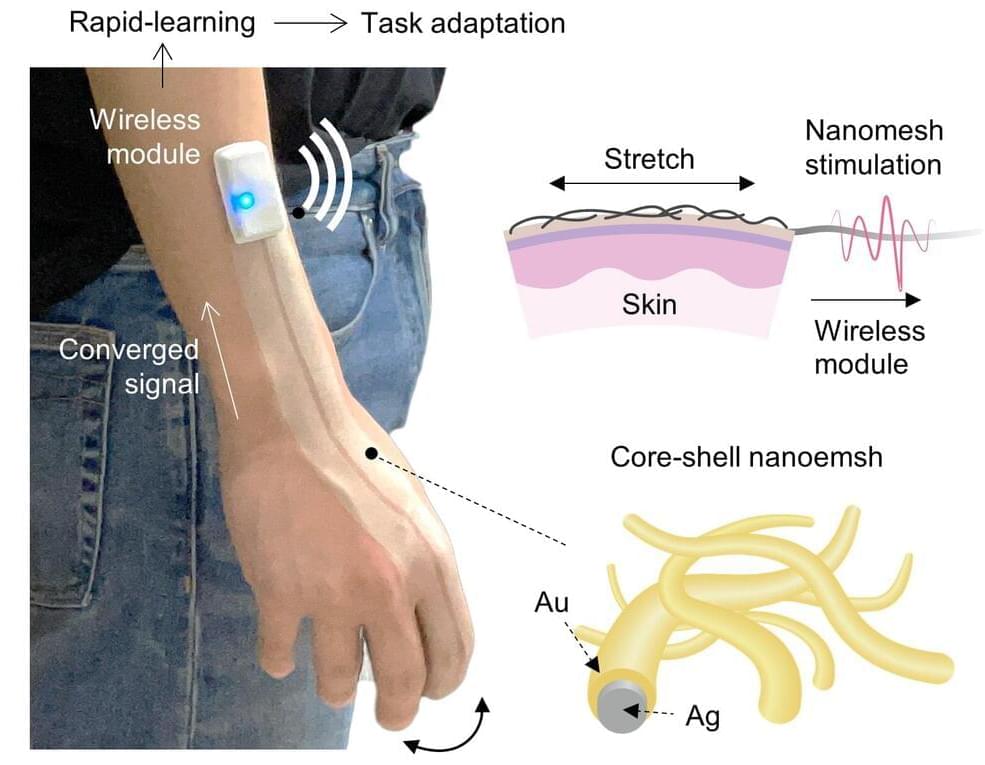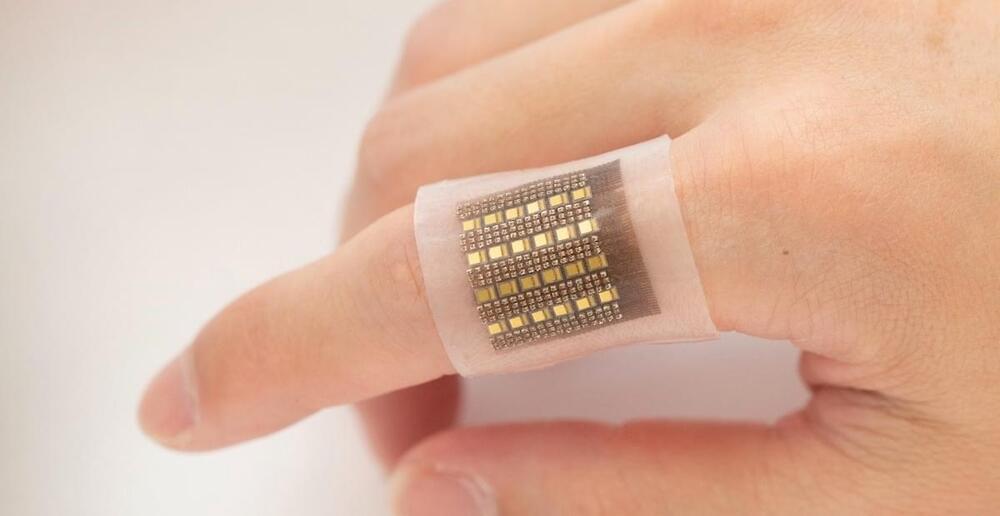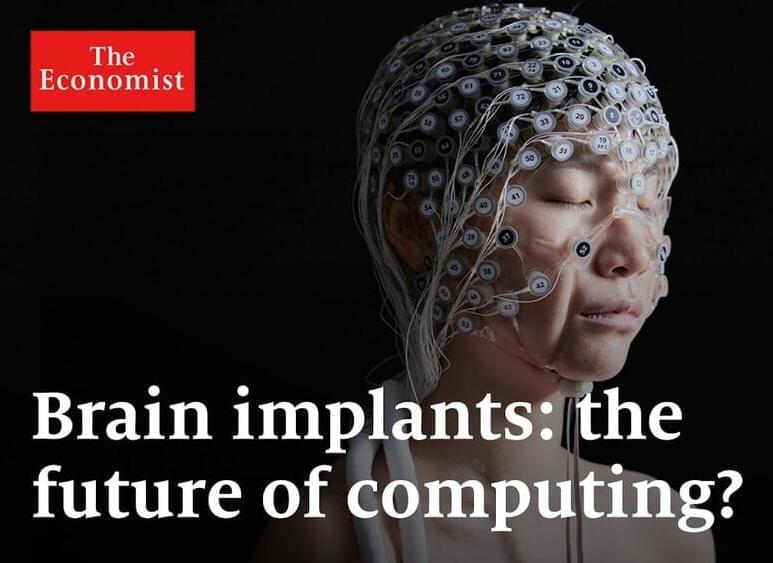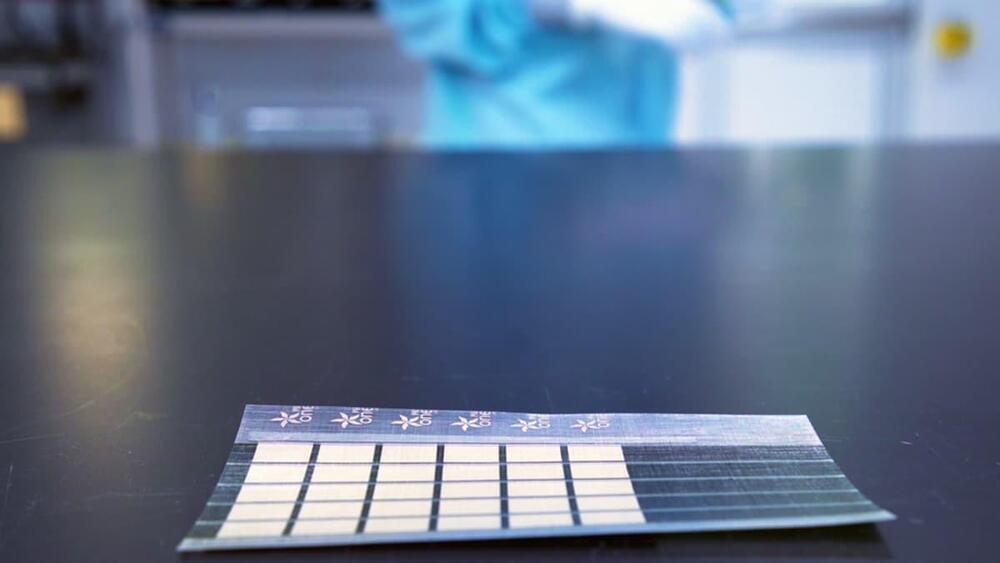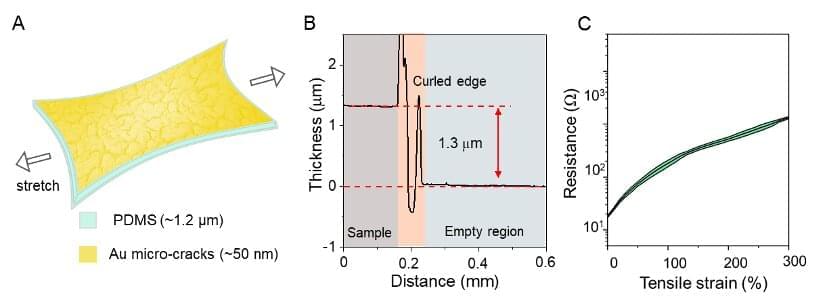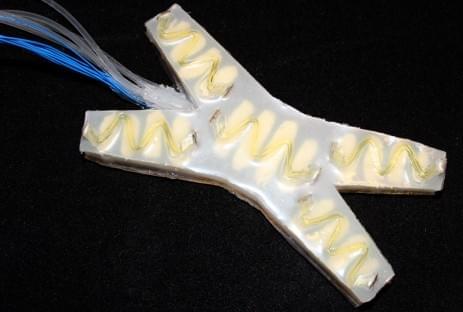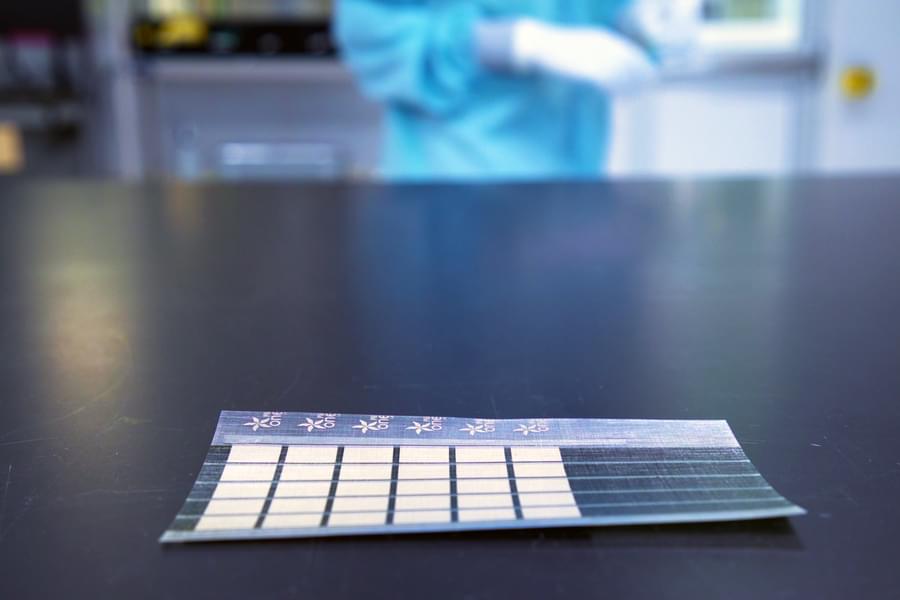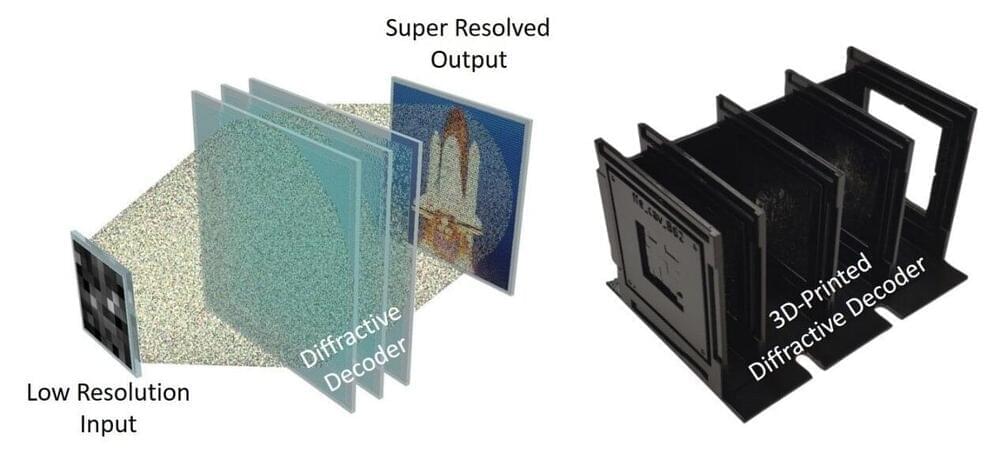Dec 31, 2022
Spray-on smart skin uses AI to rapidly understand hand tasks
Posted by Kelvin Dafiaghor in categories: biotech/medical, information science, robotics/AI, wearables
A new smart skin developed at Stanford University might foretell a day when people type on invisible keyboards, identify objects by touch alone, or allow users to communicate by hand gestures with apps in immersive environments.
In a just-publish paper in the journal Nature Electronics the researchers describe a new type of stretchable biocompatible material that gets sprayed on the back of the hand, like suntan spray. Integrated in the mesh is a tiny electrical network that senses as the skin stretches and bends and, using AI, the researchers can interpret myriad daily tasks from hand motions and gestures. The researchers say it could have applications and implications in fields as far-ranging as gaming, sports, telemedicine, and robotics.
Continue reading “Spray-on smart skin uses AI to rapidly understand hand tasks” »
